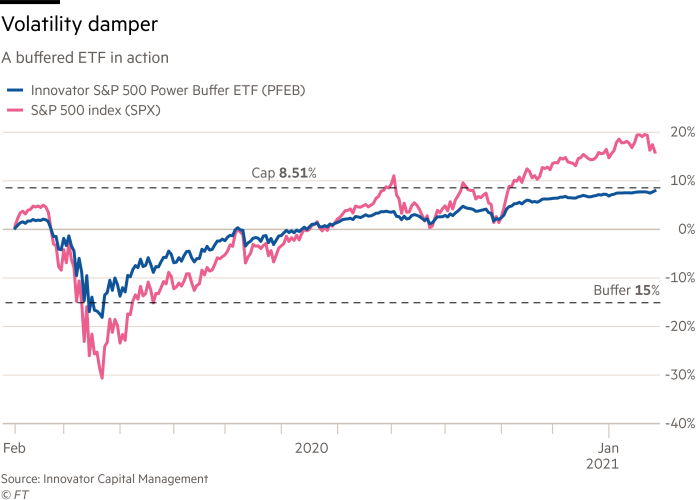BlackRock fires opening salvo in US buffered ETF price war

Simply sign up to the Exchange traded funds myFT Digest -- delivered directly to your inbox.
Latest news on ETFs
Visit our ETF Hub to find out more and to explore our in-depth data and comparison tools
BlackRock has fired the opening salvo in a widely anticipated price war among providers of US buffered exchange traded funds with its launch on June 30 of two ETFs that provide insurance against market falls.
US buffered ETFs, which normally charge annual fees of 75-85 basis points, attracted inflows of $11.1bn in last year’s turbulent markets, up from what had been a record of $4.3bn in 2021, according to FactSet.
The data provider said flows show no sign of abating despite this year’s calmer trading, with US buffered ETFs attracting $4.6bn year to date.
Now BlackRock has entered the defined outcome ETF market for the first time with two funds: the iShares Large Cap Moderate Buffer ETF (IVVM) and the iShares Large Cap Deep Buffer ETF (IVVB), undercutting rivals with annual fees of just 50bp each.
Also known as defined outcome ETFs, the vehicles use derivatives to give investors some downside protection if the market falls, but in return investors have to give up some of their gains if the market rises.

IVVM aims to protect against the first 5 per cent of quarterly losses, while IVVB seeks to protect against quarterly losses ranging from 5-20 per cent.
“Last year’s tumultuous market environment really put the category on investors’ radar and that momentum has carried over into 2023,” said Nate Geraci, president of the ETF Store, a financial adviser.
“Given the growing popularity and high average price point — [81bp according to his data] — of defined outcome ETFs, this was simply too attractive of an opportunity for BlackRock to pass up,” he added.
He noted that BlackRock was significantly undercutting its primary competition.
“My expectation is that they’ll continue applying fee pressure on this entire ETF category,” he said, adding that he would therefore expect fees to settle in below 40bp in the longer term.
There are five providers in the US buffered ETF category. The largest, with about $13bn in assets under management, is Innovator Capital Management, closely followed by First Trust with $12.8bn. Their nearest rival, Allianz, has only $1.3bn, according to data from FactSet.
But the category has been growing fast.
Aniket Ullal, head of ETF data and analytics and CFRA, a data provider and consultancy, said that at the end of 2022 there were 170 buffer ETFs in the US with $21bn in assets, but that this number had grown to 188 as of June 26, with $28bn in assets.
Despite the price competition that BlackRock’s entry heralds, Elisabeth Kashner, director of global fund analytics at FactSet, said the largest cost to buffered ETF investors was not the expense ratio, but the foregone dividend.
Latest news on ETFs

Visit the ETF Hub to find out more and to explore our in-depth data and comparison tools helping you to understand everything from performance to ESG ratings
Investors in the iShares Core S&P 500 ETF (IVV) will receive regular dividend income, she explained, whereas those in IVVM ad IVVB will not.
“The price return vs total return element is the same across providers. All in all, buffered ETFs are expensive insurance against short-term losses,” Kashner said. “That said, BlackRock’s product will be more attractive than its competitors, because of the reduced fee,” she added.
Geraci argued that banks and insurance companies should be most concerned about BlackRock’s entrance into the buffered ETFs market because they offered structured products, which can offer similar pay-off frameworks.
“[Buffered ETFs will] continue grabbing market share from the traditional structured product space, which features opacity, illiquidity, credit risk and much higher fees,” Geraci said.
Comments